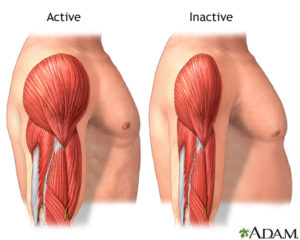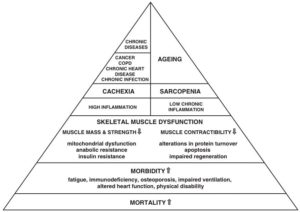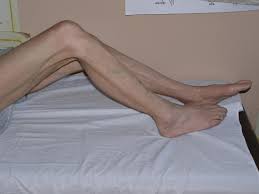Spinal muscular atrophy (SMA) is a genetic disease affecting the central nervous system, peripheral nervous system, and voluntary muscle movement (skeletal muscle).
Most of the nerve cells that control muscles are located in the spinal cord, which accounts for the word spinal in the name of the disease. SMA is muscular because its primary effect is on muscles, which don’t receive signals from these nerve cells. Atrophy is the medical term for getting smaller, which is what generally happens to muscles when they’re not stimulated by nerve cells.
SMA involves the loss of nerve cells called motor neurons in the spinal cord and is classified as a motor neuron disease.
Spinal muscular atrophy (SMA) is a disorder affecting the motor neurons—nerve cells that control voluntary muscle movement. These cells are located in the spinal cord. Because the muscles cannot respond to signals from the nerves, they atrophy — weaken and shrink — from inactivity.
Healthline through Dr. William Morrison Director, Musculoskeletal/General Diagnostic Muscle at Jefferson University Hospital, states atrophy is when muscles waste away. The main reason for muscle wasting is a lack of physical activity. This can happen when a disease or injury makes it difficult or impossible for you to move an arm or leg. A symptom of atrophied muscles is an arm that appears smaller, but not shorter, than the other arm.
You should schedule an appointment with your doctor if you think you are experiencing muscle atrophy. Your doctor will determine what treatment you need. In some cases, muscle wasting can be reversed with a proper diet, exercise, or physical therapy.
What causes SMA?
Chromosome 5-related SMA is caused by a deficiency of a motor neuron protein called SMN, for “survival of motor neuron.” This protein, as its name implies, seems to be necessary for normal motor neuron function. SMN plays a pivotal role in gene expression in motor neurons. Its deficiency is caused by genetic flaws (mutations) on chromosome 5 in a gene called SMN1. The most common mutation in the SMN1 gene within patients diagnosed with SMA is a deletion of a whole segment, called exon 7. Neighboring SMN2 genes can in part compensate for nonfunctional SMN1 genes as there is 99% identity between these two genes.
Other rare forms of SMA (non-chromosome 5) are caused by mutations in genes other than SMN1.
What is the progression of SMA?
In chromosome 5-related SMA, the later the symptoms begin and the more SMN protein there is, the milder the course of the disease is likely to be. While in the past, infants with SMA typically did not survive more than two years, with new therapies and earlier diagnosis, the typical progression of disease is changing. Today, most doctors consider SMN-related SMA to be a continuum and prefer not to make rigid predictions about life expectancy or weakness based strictly on age of onset.
SMA is the most common genetic cause of mortality in infants.
Tune it for Part II tomorrow and learn more about SMA regarding the symptoms and types!
Updated on 8/06/25


